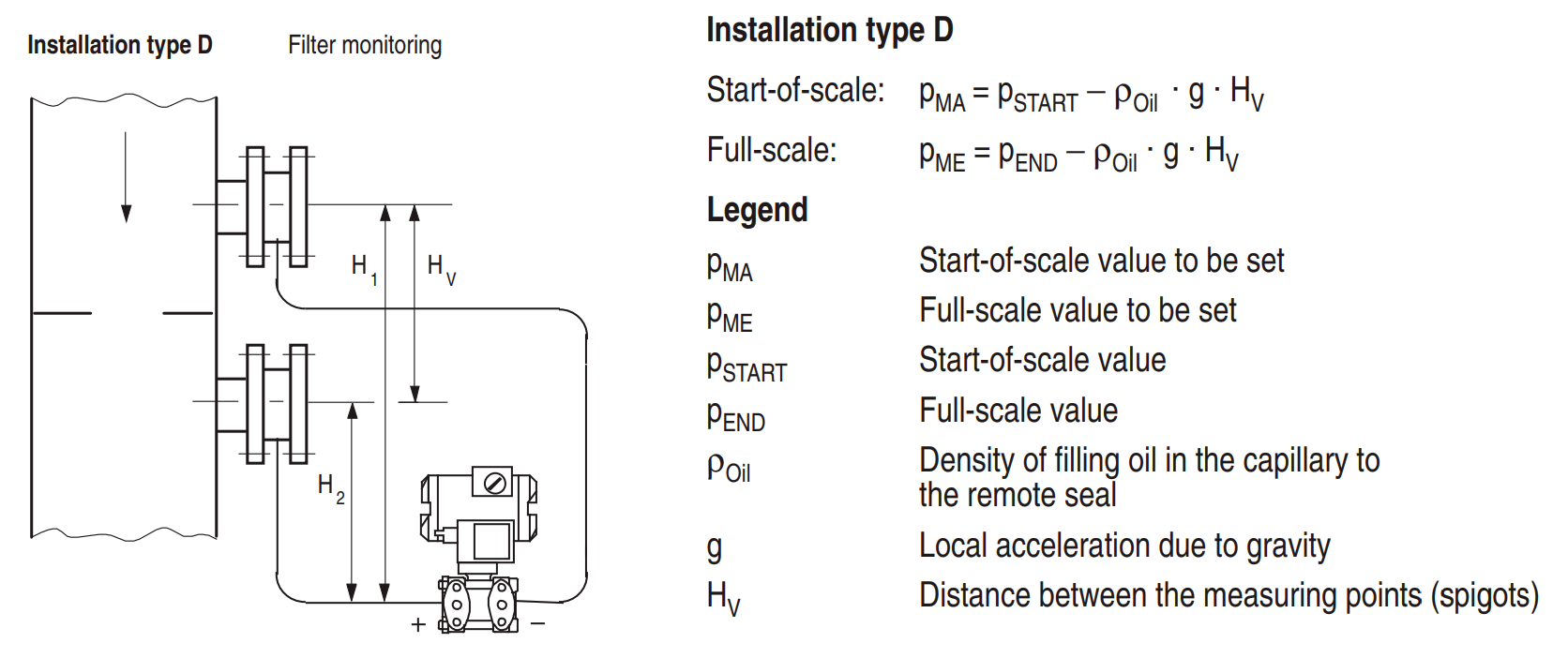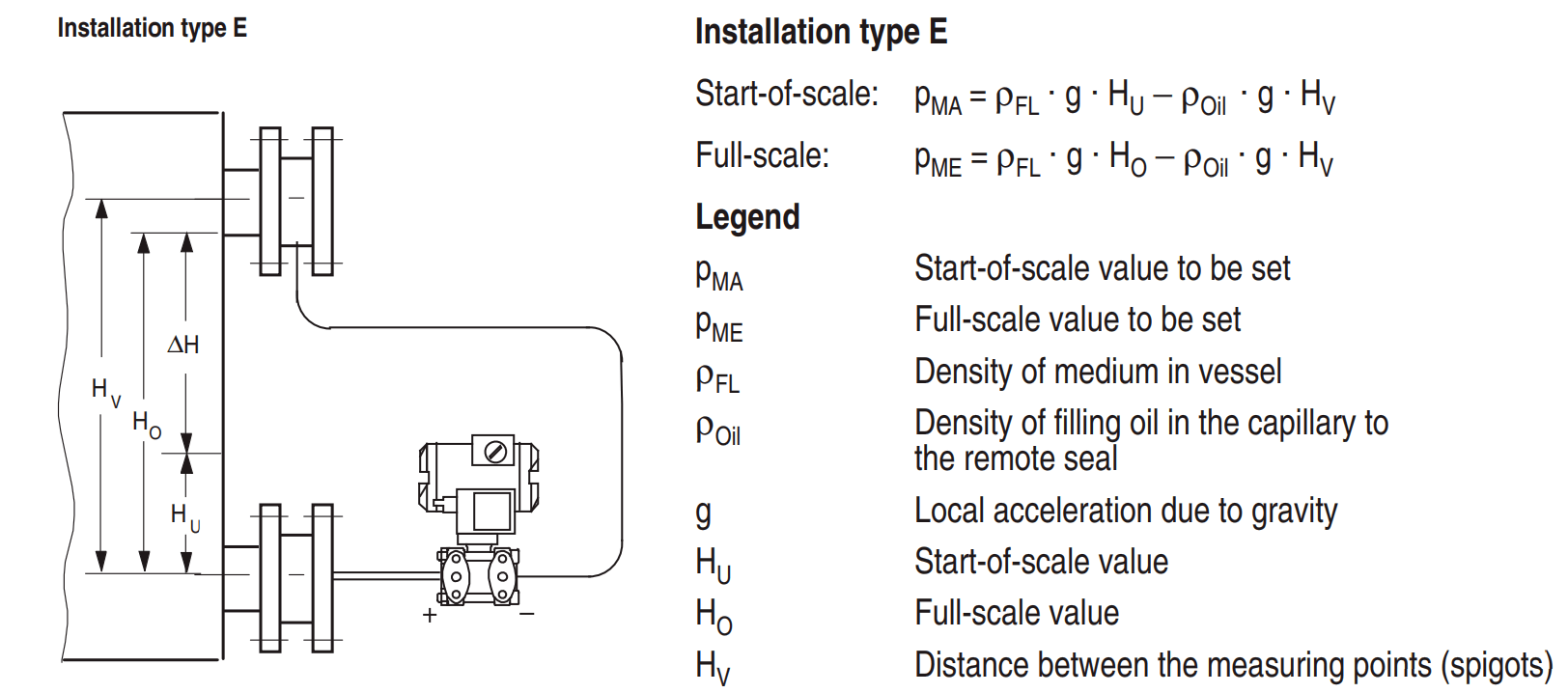Remote seals of sandwich design are fitted between the connection flange of the measuring point and a dummy flange. Remote seals of flange design are fitted directly on the connection flange of the measuring point. The respective pressure rating of the dummy flange or the flanged remote seal must be observed.
The pressure transmitter should be installed below the connection flange (and below the lower connection flange in the case of differential pressure transmitters). This arrangement must be used in the low-pressure range.
When measuring at pressures above atmospheric, the pressure transmitter can also be installed above the connection flange.
The capillaries between the remote seal and the pressure transmitter should be as short as possible to obtain a good transmission response.
Offset of measuring range
If there is a difference in height between the two connection flanges when measuring with two remote seals, an additional differential pressure will result from the oil filling of the remote seal capillaries. This results in a measuring range offset which has to be taken into account when you set the pressure transmitter.
An offset in the measuring range also occurs when combining a remote seal with a transmitter if the remote seal is not installed at the same height as the transmitter.
Pressure transmitter output
If the level, separation layer or density increase in closed vessels, the differential pressure and hence the output signal of the pressure transmitter also increase.
For an inverted relationship between the differential pressure and the output signal, the start-of-scale and full-scale values of the SITRANS P (transmitter) must be interchanged.
With open vessels, a rising pressure is usually assigned to an increasing level, separation layer or density.
Influence of ambient temperature
Temperature differences between the individual capillaries and between the individual remote seals should be avoided. Temperature variations in the area of the measuring setup cause a change in volume of the filling liquid and hence measuring errors.
Notes
- For the separation layer measurement, the separation layer has to be positioned between the two spigots. Also you must make sure that the level in the container is always above the top spigot.
- When measuring density, make sure that the level of the medium remains constant. The level should be above the top spigot.
The following figures showing calculation formulae for different measurements like level, separation (interface), and density measurements for both Open & Closed Tanks using Remote Seal Type Pressure/Differential Pressure Transmitters.
In below figures : PMA & PME are nothing but LRV & URV of a transmitter.
Types of installation for pressure and level measurements (open vessels)

Types of installation for absolute level measurements (closed vessels)

Type of installation for differential pressure and flow measurements

Types of installation for level measurements (closed vessels)


Reference : Siemens Manual
Articles You May Like :
Pressure Gauges Chemical Seals
I have some confusion about Hu .it will be zero always or not ,how we select this .kindly brief me about this
Dear Sir,
pressure ma calculation and temperature ma calculation pls